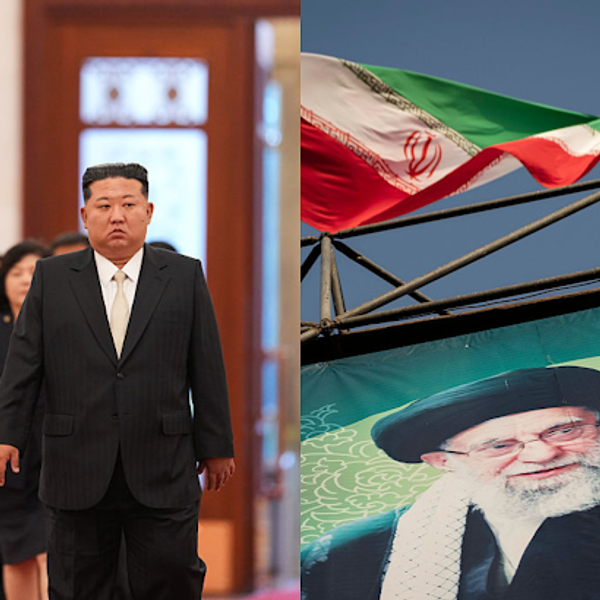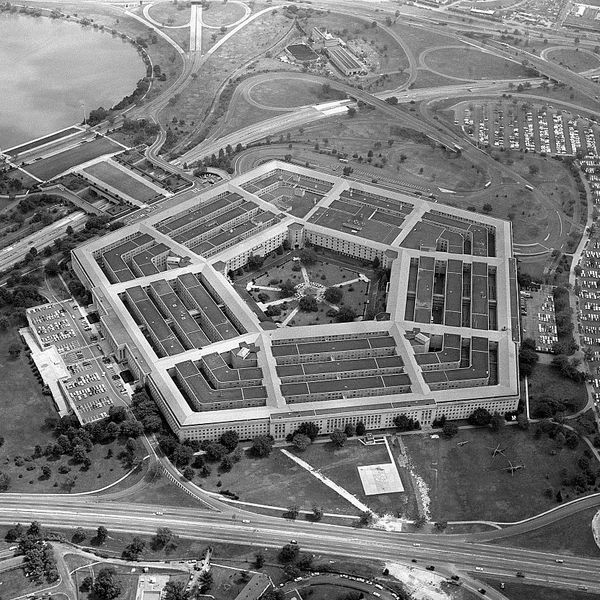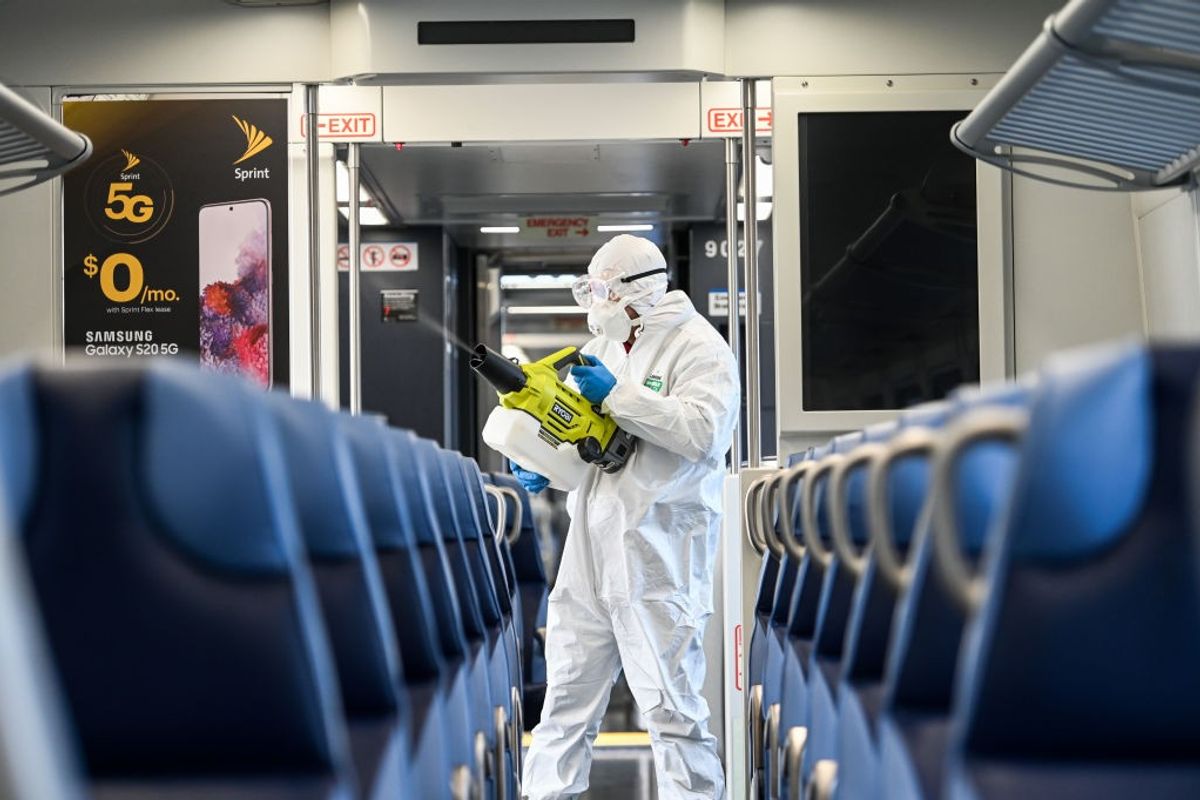OPINION — “The SLCM-N [sub-launched nuclear cruise missile] is theoretically meant to assure our adversaries that we have the ability to respond in kind – in short to give us more flexibility. I am concerned that we are spending money and taxing [nuclear weapons] manufacturing capacity for a redundant capability.”
That was Sen. Mark Kelly (D-Ariz.) last Wednesday, speaking at a Senate Armed Services Strategic Subcommittee hearing on the fiscal 2025 budget for nuclear weapons programs.
A Navy pilot who retired at the rank of Captain and a former NASA astronaut, Kelly has questioned the need for a new SLCM-N.
It is difficult to halt U.S. development of a new nuclear weapon once the procedure has begun – as is the case with the SLCM-N. Proponents have argued that the SLCM-N, with a low-yield warhead, will provide added capability to preserve credible deterrence against regional nuclear threats, such as Russian President Putin’s recent rattling of the nuclear saber since his February 2022 invasion of Ukraine.
But as Kelly stated last week, the U.S. has already deployed a sub-launched, low-yield W76-2 warhead to meet that very threat. And, Kelly added, “The Air Force is soon going to have the stand-off, long-range missile on a B-21 [new bomber] and its W80 warhead has a low-yield option.”
In addition, there is a low-yield capability on the more than 100 American-controlled, B61 tactical nuclear bombs already deployed at NATO air bases in Europe, and newer ones are also on the way – B61-12s – with an even newer B61-13 in development.
Kelly presented another forceful argument against the SLCM-N that is worth noting, before I detail the current upgrading of U.S. delivery systems and potential expansion of the entire U.S. nuclear stockpile: Kelly said he was “concerned about the changes we would have to make in the Virginia class subs to accommodate SLCM-N,” and the “cost to take conventional torpedoes off [these] attack submarines.”
A view from the torpedo room
Back on May 16, at an earlier Armed Services Committee meeting with Navy Secretary Carlos Del Toro, Kelly reminded the Navy Secretary of the time “you and I were aboard [Virginia class attack submarine] USS Indiana and spent some time in the torpedo room.”
It was then, Kelly said, that he learned that “the modifications for a weapons system aboard a ship is significant.” To add the SLCM-N, he said, “There would have to be changes in the [submarine’s] safety systems, security, storage, launch communications, command and control for nuclear weapons, secure communications, [and] authorization [to launch] protocol.”
Del Toro agreed. “By providing this SLCM-N capability,” he said, “it will fundamentally change the mission of those submarines themselves.” He added that he was “concerned with the operational impact on our submarine force and their ability to actually conduct tactical operations that they actually need to do in the Indo-Pacific and elsewhere around the world — and actually prevent us from doing things we need to do tactically and operationally.”
At the earlier hearing, Del Toro said he was also “very concerned about… the opportunity costs here: The cost of the [SLCM-N] missiles themselves. This will be a multi-billion-dollar program that will prevent us from doing other things that are equally important throughout our naval enterprise.”
At last week’s hearing, Vice Admiral Johnny Wolfe, Director of the Navy’s Strategic Systems Programs, said that in the coming year the Navy SLCM-N study will look at “what solutions are out there [that] would minimize the number of modifications that we’d need to make on one of our…Virginia [class submarines].” Wolfe added, “There is no doubt, based on the solution, the impact could be great...which is why we’ve asked for the flexibility to be able to look at multiple solutions.”
Wolfe did say to Kelly that “from an operational perspective, you are absolutely right – any time when you have a conventional mission with a nuclear mission you have to be careful to segregate those.” He also said that “from a cost perspective, it would be premature to give you an exact cost estimate for what a program like that would cost.”
At last week’s hearing, Kelly summed up by saying, “When you look at a conflict between the United States and a near peer adversary [China or Russia] that has, maybe in some cases could have a bigger fleet, both in naval and merchant vessels, our submarine capability is substantial, it’s significant. It would weigh heavily in that kind of conflict. And when I think about the probability of firing the conventional torpedo out of a submarine out of a torpedo tube – and the likely of having to do that at multiple times, and…weighing that with the rather unlikely event that we would employ a tactical nuclear weapon in combat, one of my biggest concerns is that we would be giving up something we really need, for something we are unlikely to use.”
Wolfe responded, “How do you weigh [nuclear] options available to the President for a deterrent capability with the conventional capability? And certainly, the next year will inform us on how we can get at how to balance all of that.”
A debate spanning two administrations
Debate over the SLCM-N began under the Trump administration, when the 2018 Nuclear Posture review proposed SLCM-N’s development along with a low-yield warhead, the W76-2, for the Trident D5 sub-launched intercontinental ballistic missile. The W76-2 could be made by simply limiting the explosive yield of a W76-1 warhead, which is 90 kilotons, more than six times the explosive power of the Hiroshima bomb.
Critics at the time said neither Russia nor any other targeted country could distinguish a low-yield warhead from a high-yield one on an incoming U.S. strategic sub-launched missile carrying the W76-2.
However, an estimated 25 W76-2s have been produced at an estimated cost of $125 million, and since 2019, some W76-2s have been carried on patrolling Ohio class strategic submarines.
At last week’s hearing, when asked by Sen. Angus King (I-Maine) about massive nuclear retaliation not being a credible response to an adversary’s use of tactical nuclear weapons, Wolfe appeared to agree, saying, “Although we have deployed the W76-2 – and we’re done with that…you ask yourself is that a credible scenario if you are trying to deter in a regional conflict?”
King seemed to reflect what critics of the original W76-2 program had said: The W76-2 did not solve the claimed need for another low-yield tactical nuclear weapon because, as explained above, coming from a submarine carrying both high-yield and low-yield nuclear warheads on similar missiles, an adversary doesn’t know which system is being used.
Meanwhile, as the subcommittee was told, the trillion-dollar replacement continues the U.S. Triad of new strategic nuclear weapon delivery systems – Columbia class strategic submarines, B-21 Raider strategic bombers, and Sentinel land-based ICBMs.
Rising budgets
The Sentinel system has serious cost-increase problems. General Thomas A. Bussiere, Commander, Air Force Global Strike Command, told the Senators last week that Sentinel “requires the replacement of every facet of the [current 50-year-old] MMIII [Minuteman III intercontinental ballistic missile (ICBM)] weapon system, including flight systems, command and control, launch systems, missile silos, control centers, and other ground infrastructure.”
In January 2024, the Air Force said the new ICBM faced a delay of up to two years, cost overruns topping 37 percent, which projected a more than $132 billion expenditure. The Sentinel program thus triggered a Defense Department review which requires personal certification of a restructured Sentinel program by Defense Secretary Lloyd Austin — or his cancellation of the program.
Early indications are that many of the unexpected costs are associated with required new Sentinel infrastructure, such as complicated command and control systems, thousands of miles of communication cables, acquisition of land, modification or construction of up to 600 facilities, and rebuilding of silos. The DoD review is expected in early July.
Adm. Wolfe said the Columbia class program will deliver “a minimum of 12 boats on time, as the Ohio class submarines begin to retire.” The first Columbia submarine, the USS District of Columbia, is scheduled to enter service in 2031.
Gen. Bussiere said that the B-21 program is “within its acquisition program baseline for both cost and schedule targets.” However, the Air Force, he said, is seeking to have Congress waive the five-year “sunset” prohibition on modernizing aircraft scheduled to retire, so that upgrades can take place on the B-1B and B-2 strategic bombers “until the B-21 is operational at each main operating base.” The first B-21 is scheduled to enter service in 2027.
Jill Hruby, Administrator of the National Nuclear Security Administration (NNSA), the complex that builds and upgrades the nuclear elements of the weapons, described the active programs that require some $19.8 billion for nuclear weapons programs in the coming fiscal year, up by over $2 billion from this year.
As I have written before, work is being done on upgrading the W87-1 warhead for the Minuteman III ICBM, which will replace the aging W78 warhead, one of the oldest in the stockpile. There is also the W93, which is on track for production starting in the mid-2030s to enhance operational effectiveness of the sub-launched strategic ballistic missile force.
NNSA has also begun the B61-13 tactical bomb program to go after hardened targets or large-area military targets. It will supplement the modernized B61-12 tactical bomb, which already is in production. Hruby said, “In coordination with DoD, NNSA will decrease the number of B61-12s built by the number of B61-13s manufactured, resulting in no change to the number of weapons in the stockpile.”
Hruby also confirmed that NNSA has requested $69 million to support early exploration of potential weapon design concepts for totally new warheads to go after hard and deeply buried targets, perhaps using hypersonic rather than ballistic reentry systems.
For those nervous about the U.S. now facing the future prospect of having China along with Russia as a peer nuclear power, I point to Hruby’s prepared statement: “I am proud to report that NNSA delivered over 200 modernized nuclear weapons to the Department of Defense this past year – the most since the end of the Cold War.”
And if you think U.S. nuclear weapons will not be around for a long time, here is what Adm. Wolfe pointed out last week: “Columbia class SSBNs [strategic ballistic submarines] will ensure the effectiveness and availability of the nation's sea-based strategic [nuclear] deterrent through the 2080s.”
The Cipher Brief is committed to publishing a range of perspectives on national security issues submitted by deeply experienced national security professionals.
Opinions expressed are those of the author and do not represent the views or opinions of The Cipher Brief.
Have a perspective to share based on your experience in the national security field? Send it to Editor@thecipherbrief.com for publication consideration.
Read more expert-driven national security insights, perspective and analysis in The Cipher Brief











